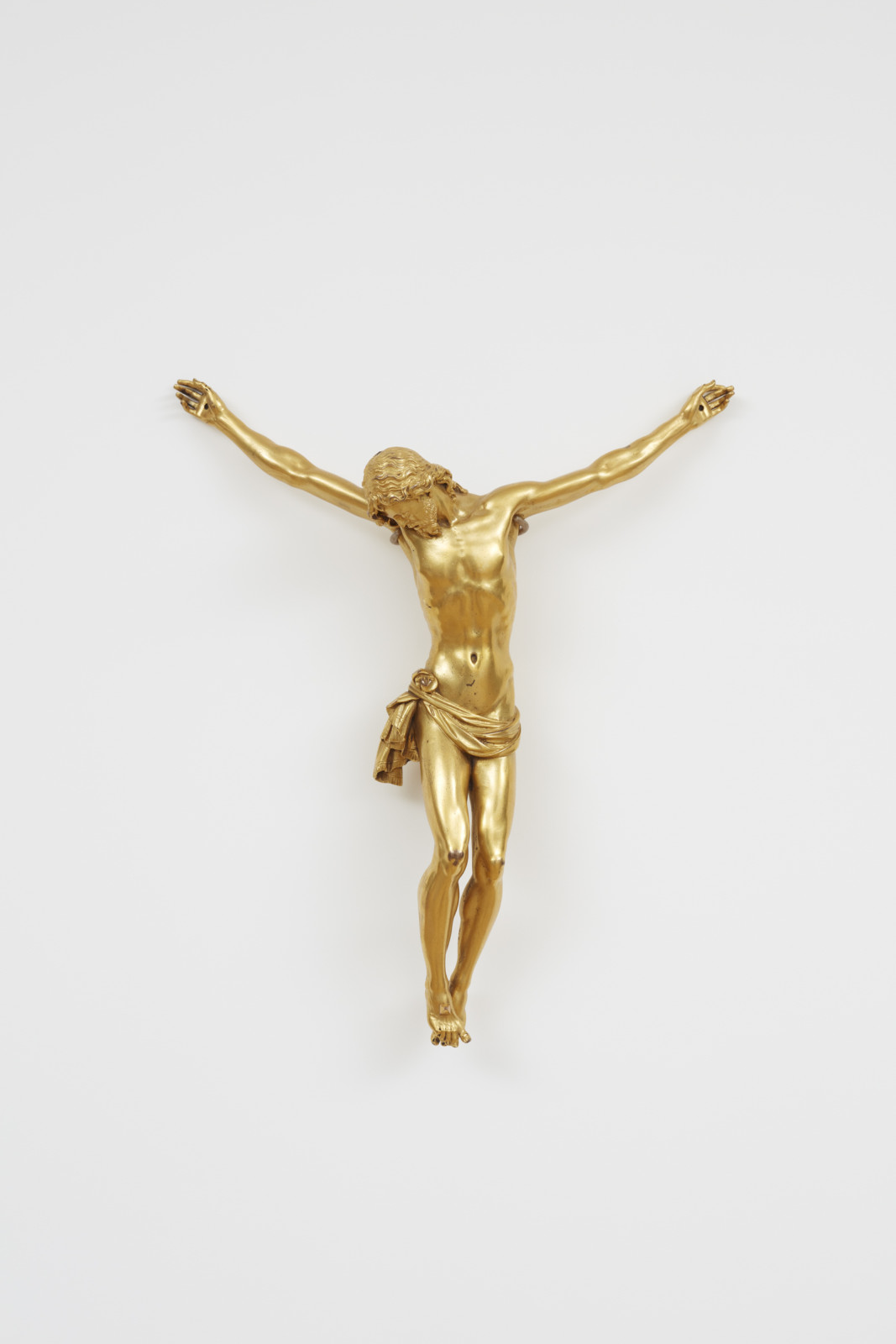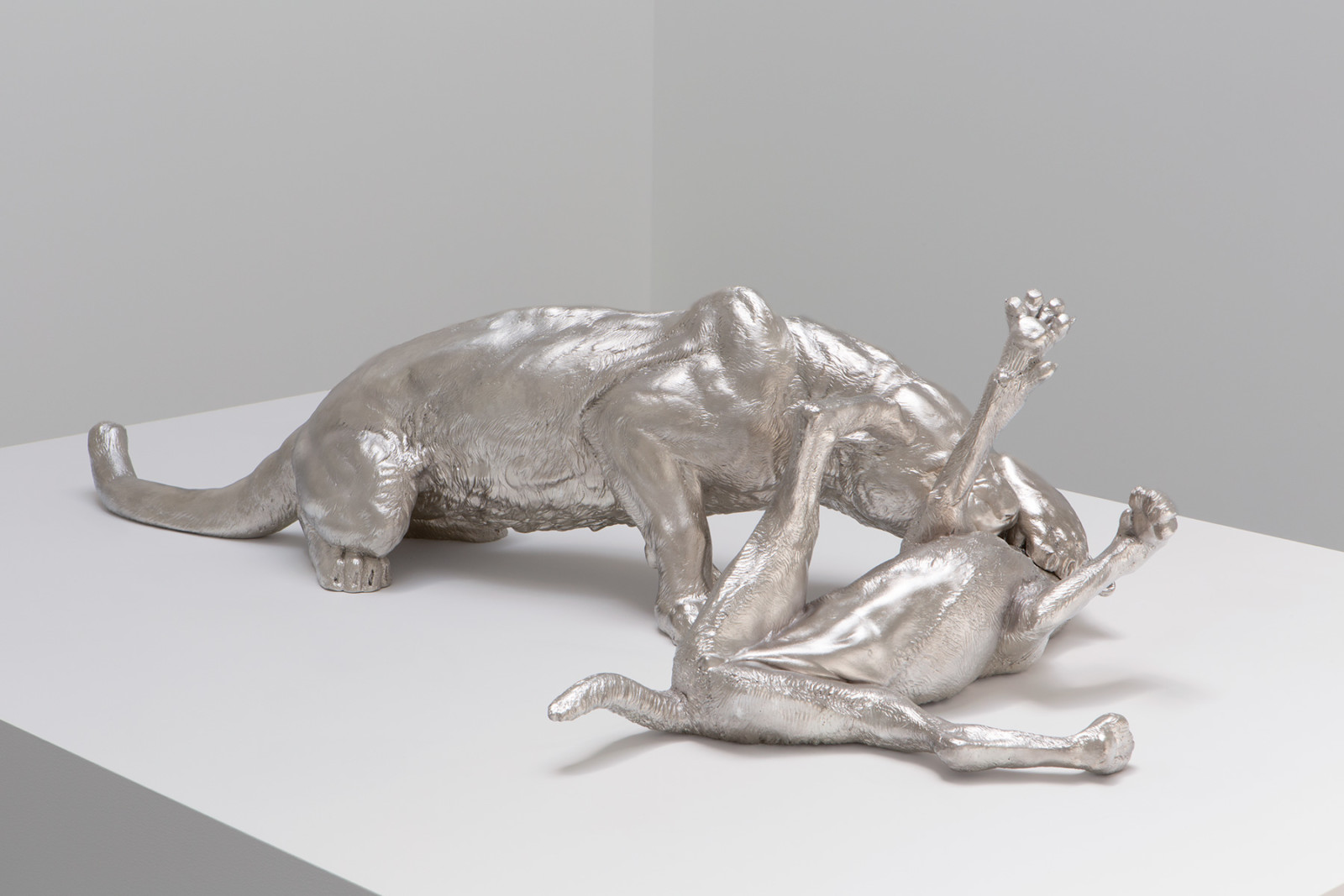Antonio Susini x Charles Ray

Antonio Susini
Cristo Morto, circa 1590-1615
Gilt bronze
© Hill Art Foundation; Photo by Matthew Herrmann

Charles Ray
Mountain lion attacking dog, 2018
Sterling silver
© Charles Ray; Courtesy Charles Ray and Matthew Marks Gallery
“Both the Mountain lion attacking dog and Cristo Morto depict different versions of a struggle. The Mountain lion attacking dog by Charles Ray shows a realistic struggle between two animals. This work is much larger than Cristo Morto, but both were created using metals. Ray’s work illuminates the divine struggle in Cristo Morto. Jesus, much like both the mountain lion and the dog, was incredibly powerful, yet here he is shown at a point of weakness. His struggle and crucifixion are widely understood to be a sacrifice; this understanding is paralleled in Ray’s work as the dog’s life was sacrificed to satisfy the needs of the lion. The dog also literally parallels Cristo Morto as he is pinned down with his limbs outstretched similar to that of Christ’s arms. Being placed in the same room allows both works to create this balance and exploration of the mortal world, the divine world, and the order of nature. Together these works truly compare struggle and allow viewers to question the nature of these occurrences.”
Sha-Emera Campbell, Teen Curator 2019-2020